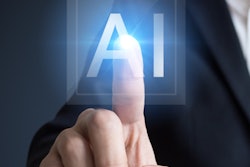Dear AuntMinnie Member,
CHICAGO - Radiology's greatest showcase opened today under gray skies along the shores of Lake Michigan. Although the weather outside was gloomy, the halls of McCormick Place were scintillating with the latest discoveries in medical imaging.
In Sunday's opening lecture, RSNA 2019 President Dr. Valerie Jackson advised radiologists to make a conscious effort to create a culture of patient interaction and keep humanity at the forefront of the specialty. Specifically, she suggested that imaging specialists take a new look at the way things are done and make a new effort to get out of the reading room.
It's no surprise that artificial intelligence (AI) is hot at this year's meeting. In the Sunday scientific sessions, Dutch researchers discussed how they trained a 3D convolutional neural network to localize and grade vertebral fractures in a manner that's consistent with clinical practice. And in another AI-related talk, U.K. researchers presented the findings of a retrospective study about AI's accuracy in detecting breast cancer.
Meanwhile, researchers from Thomas Jefferson University in Pennsylvania found certain imaging patterns from gunshot injuries could predict which patients would have long-term complications.
And in a fascinating study, researchers from Duke University discovered that the high resolution of micro-CT scanning was perfect for analyzing the internal features of manikins, tiny human figurines used for medical education in the 17th century.
You'll find all the latest news from Chicago in our RADCast @ RSNA special section. And for even faster updates, follow us on Twitter.
Trends in Imaging Informatics
But RSNA 2019 isn't the only place where news is happening in radiology. We're pleased to announce the release of a new special report, Trends in Imaging Informatics, that covers some of the latest developments in this field, including the looming arrival of clinical decision support and the role of artificial intelligence in driving growth in radiology IT.



















